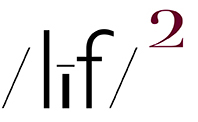(embiggenable)
(embiggenable)
(embiggenable)
IN MY LAST ENTRY I USED THE PHRASE, THE “challenge” of documenting the form. I employed the scare quotes to imply that my use of the word challenge should considered with a high degree of skepticism or doubt. That’s cuz seeing and picturing form is, for me, about as challenging as falling off a log inasmuch as seeing form is how I see.
I could not turn off seeing form even if I wanted to do so. Even though, at times, it seems like a curse, I realize that if I were to turn it off, I would not have had a career as a commercial photographer along with sub-careers in graphic design, art direction and as a creative director. Throw in to the mix my pursuit of fine art picture making and I can write that I would not have known what to do with my life.
In any event, back to picture making, re: the word challenge. I live in a forest preserve / state park to which thousands, if not hundreds of thousands, of landscape / natural world picture makers flock like bees to honey, flies to sh*t, or any other metaphor one might like to use. Add Fall foliage to the landscape and the influx of picture makers takes on the aspect of a Pavlovian stampede. Be that as it may, you can bet your bottom dollar that saturation-slider-to-the-max, rule of thirds and other bogus advice about picture making is the order of the day.*
I mention the following cuz I find myself with a real picture making challenge when I come upon a wide-open landscape. The challenge? It’s as if my form-seeing visual apparatus has, just like Elvis, left the building. I don’t see it and I don’t feel it. It is, to put it mildly, very disconcerting. It is almost as if I am afraid to make a picture for fear that it will…pause for a gasp and shutter…look like a picture made by the stampeding masses.
I would consider counseling to get over my fear except for the fact that, if I get over my fear, I would probably start making pictures that look like, well, I don’t want them to look like. I have given thought to bringing along a flask of bourbon or scotch to drink in order to overcome my inhibitions, but the outcome would probably be no better than the counseling outcome and that would just be a waste of some good bourbon or scotch.
But seriously folks, the root picture making problem for me in such circumstances-to include making a picture of a referent I actually care about-is that, if I don’t see “it“ then I can’t feel “it”, and then I have to think about “it”. And, inasmuch as I have studiously, throughout my entire picture making life, avoided thinking about anything when making a picture, the very thought of thinking would just about end it for me.
In a nutshell, what I am writing about here is the difference between the observing mind-which just watches and is simply aware-and the thinking mind which judges, analyzes, reasons, and attempts to make sense out of things. And, my thinking mind tells me that, in pursuit of working in a visual medium, it makes sense to be an observer rather than a thinker.
*I have no problem with this kind of picture making. It’s just not my thing. If it floats your boat, have at it.
PS I have managed over the years to make some pictures of the landscape which avoid the genre’s typical cliches. So far, it has not killed me.

